 Search by Keyword
Sign Up Below for our MONTHLY BEATLES TRIVIA QUIZ!
|
"I'M A LOSER"
(John Lennon - Paul McCartney)
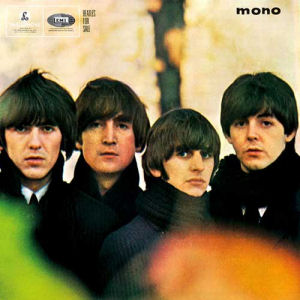 "Anyone who is one of the best in his field - as Dylan is - is bound to influence people." This statement from John Lennon in 1964 indicated where he placed the credit for his change in songwriting style. While other songs written earlier that year touched on aspects of the Bob Dylan sound (such as the puffing harmonica on "I Should Have Known Better"), the first Lennon song that is openly credited by all sources as being musically and lyrically influenced by Bob Dylan is the second track on the British "Beatles For Sale" album, "I'm A Loser." "Anyone who is one of the best in his field - as Dylan is - is bound to influence people." This statement from John Lennon in 1964 indicated where he placed the credit for his change in songwriting style. While other songs written earlier that year touched on aspects of the Bob Dylan sound (such as the puffing harmonica on "I Should Have Known Better"), the first Lennon song that is openly credited by all sources as being musically and lyrically influenced by Bob Dylan is the second track on the British "Beatles For Sale" album, "I'm A Loser."
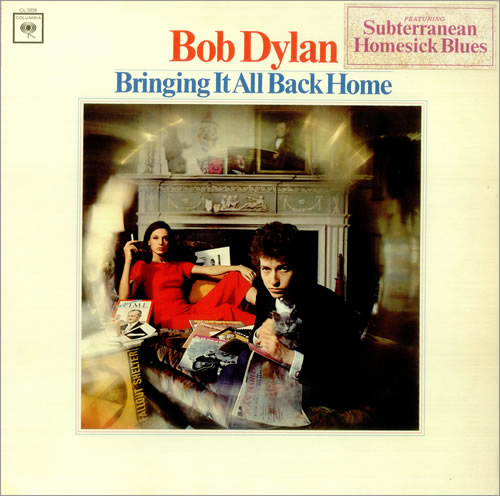 This is not to say that Bob Dylan was the only inspiration for the song. Nor is it to say that he himself didn't take a little inspiration from The Beatles as well. "I wouldn't be surprised if we influenced him in some way," was how John continued the above quote. Influence they did, the result being Bob Dylan's March 1965 album "Bringing It All Back Home" which included a whole album side with an electric band, something that alienated many fans but brought him into the mainstream. This is not to say that Bob Dylan was the only inspiration for the song. Nor is it to say that he himself didn't take a little inspiration from The Beatles as well. "I wouldn't be surprised if we influenced him in some way," was how John continued the above quote. Influence they did, the result being Bob Dylan's March 1965 album "Bringing It All Back Home" which included a whole album side with an electric band, something that alienated many fans but brought him into the mainstream.
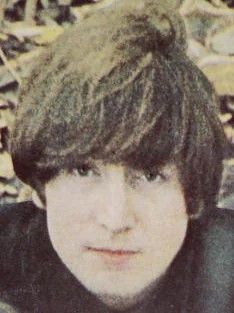 The Beatles' music began in earnest to steer toward growth (as did Bob Dylan's) in late 1964. The title "I'm A Loser" itself was quite bold; something that teenage girls definitely didn't view John Lennon as. Young fans didn't think twice about accepting introspective and revealing lyrics if they were from their favorite British quartet. And older music listeners could only stop and wonder why the hottest artist of the year would release a song by that name. So if you look at it that way, The Beatles recording a song entitled "I'm A Loser" was a win-win all the way around. The Beatles' music began in earnest to steer toward growth (as did Bob Dylan's) in late 1964. The title "I'm A Loser" itself was quite bold; something that teenage girls definitely didn't view John Lennon as. Young fans didn't think twice about accepting introspective and revealing lyrics if they were from their favorite British quartet. And older music listeners could only stop and wonder why the hottest artist of the year would release a song by that name. So if you look at it that way, The Beatles recording a song entitled "I'm A Loser" was a win-win all the way around.
Songwriting History
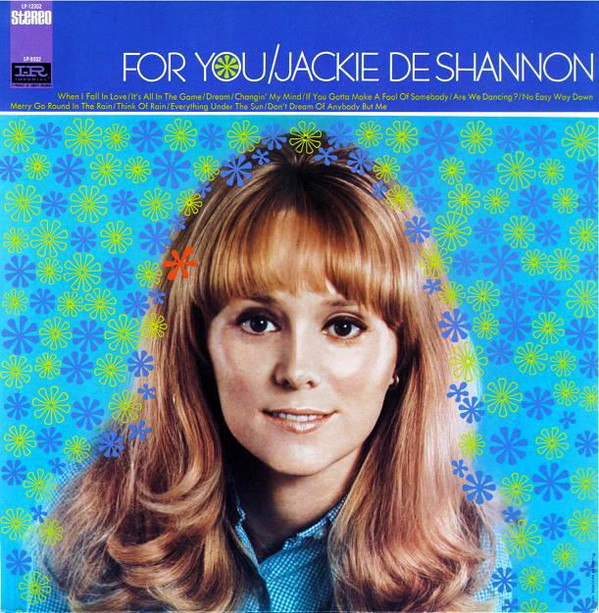 July 1964 is the summer month that John Lennon most likely penned this autobiographical song. The Beatles had just returned from their hectic June 1964 world tour and were working at a more relaxed pace in their home country in July. Having a couple recording sessions in August to start work on their next British album (eventually to be titled "Beatles For Sale"), they set off for their "First American Tour," which commenced on August 19th, 1964. Since "I'm A Loser" was already recorded before the tour started, support act Jackie DeShannon's claim that John wrote the song on the tour plane has to be incorrect. She must have heard him run through the already-recorded song at that time. July 1964 is the summer month that John Lennon most likely penned this autobiographical song. The Beatles had just returned from their hectic June 1964 world tour and were working at a more relaxed pace in their home country in July. Having a couple recording sessions in August to start work on their next British album (eventually to be titled "Beatles For Sale"), they set off for their "First American Tour," which commenced on August 19th, 1964. Since "I'm A Loser" was already recorded before the tour started, support act Jackie DeShannon's claim that John wrote the song on the tour plane has to be incorrect. She must have heard him run through the already-recorded song at that time.
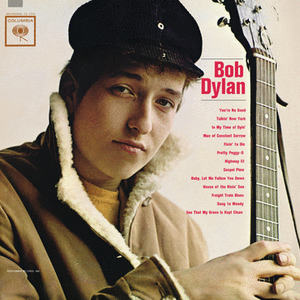 As for the song's inspiration, there appears to be a little more than Bob Dylan in the mix. "We used to listen to a lot of country and western songs," McCartney related in 1994, "and they were all about sadness and 'I lost my truck,' so it was quite acceptable to sing 'I'm a loser.' You really didn't think about it at the time, it was only later you'd think, 'God! That was pretty brave of John.' 'I'm A Loser' was pretty much John's song and there may have been a dabble or two from me." From listening to the impressive walking bass lines and harmonies on the chorus, it appears that Paul's "dabbles" had something to do with this part of the song. As for the song's inspiration, there appears to be a little more than Bob Dylan in the mix. "We used to listen to a lot of country and western songs," McCartney related in 1994, "and they were all about sadness and 'I lost my truck,' so it was quite acceptable to sing 'I'm a loser.' You really didn't think about it at the time, it was only later you'd think, 'God! That was pretty brave of John.' 'I'm A Loser' was pretty much John's song and there may have been a dabble or two from me." From listening to the impressive walking bass lines and harmonies on the chorus, it appears that Paul's "dabbles" had something to do with this part of the song.
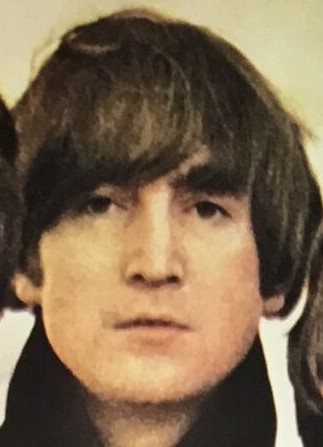 "Instead of projecting myself into a situation," John explained about the song, "I would try to express what I felt about myself. I think it was Dylan who helped me realize that." While the Bob Dylan influence is undeniable in "I'm A Loser," lyrically and instrumentally, another new acquaintance apparently steered John in the direction of self-expression. "Instead of projecting myself into a situation," John explained about the song, "I would try to express what I felt about myself. I think it was Dylan who helped me realize that." While the Bob Dylan influence is undeniable in "I'm A Loser," lyrically and instrumentally, another new acquaintance apparently steered John in the direction of self-expression.
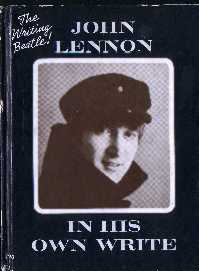 Lennon was interviewed regarding his first book "In His Own Write" by famous British journalist Kenneth Allsop on March 23rd, 1964 for the BBC television show "Tonight." While in the 'green room' at BBC's Lime Grove Studios on this day, Kenneth Allsop discussed John's songwriting. Many years later Lennon discussed this meeting with friend Elliot Mintz who explains their conversation: "(Kenneth) Allsop had in essence said to him that he wasn't terribly enamored with Beatles' songs because they all tended to be 'she loves him,' 'he love her,' 'they love her' and 'I love her.' He suggested to John that he try to write something more autobiographical, based on personal experience rather than these abstract images. That struck a chord with him." Lennon was interviewed regarding his first book "In His Own Write" by famous British journalist Kenneth Allsop on March 23rd, 1964 for the BBC television show "Tonight." While in the 'green room' at BBC's Lime Grove Studios on this day, Kenneth Allsop discussed John's songwriting. Many years later Lennon discussed this meeting with friend Elliot Mintz who explains their conversation: "(Kenneth) Allsop had in essence said to him that he wasn't terribly enamored with Beatles' songs because they all tended to be 'she loves him,' 'he love her,' 'they love her' and 'I love her.' He suggested to John that he try to write something more autobiographical, based on personal experience rather than these abstract images. That struck a chord with him."
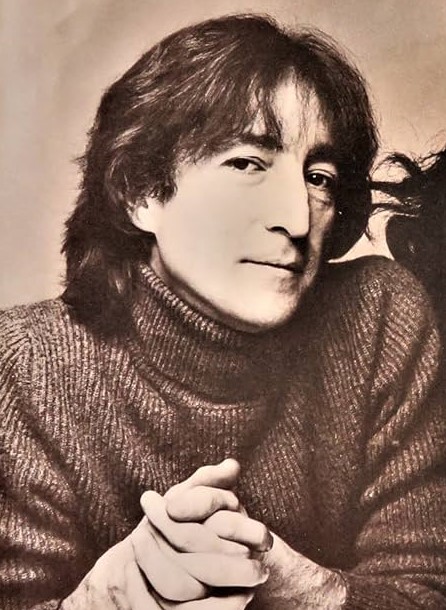 While Lennon had already been depicting himself as "crying" and "lonely" in his songwriting, "I'm A Loser" shows John expressing raw emotions in a much more revealing way. This song, therefore, shows itself as the first fruits of taking to heart what both Bob Dylan and Kenneth Allsop had been talking to him about. "That's me in my Dylan period," Lennon himself explained in 1980. "Part of me suspects I'm a loser and part of me thinks I'm God Almighty." Although he laughed after saying these words, the song itself helps us to suspect what he may have been feeling "beneath this mask." While Lennon had already been depicting himself as "crying" and "lonely" in his songwriting, "I'm A Loser" shows John expressing raw emotions in a much more revealing way. This song, therefore, shows itself as the first fruits of taking to heart what both Bob Dylan and Kenneth Allsop had been talking to him about. "That's me in my Dylan period," Lennon himself explained in 1980. "Part of me suspects I'm a loser and part of me thinks I'm God Almighty." Although he laughed after saying these words, the song itself helps us to suspect what he may have been feeling "beneath this mask."
Recording History
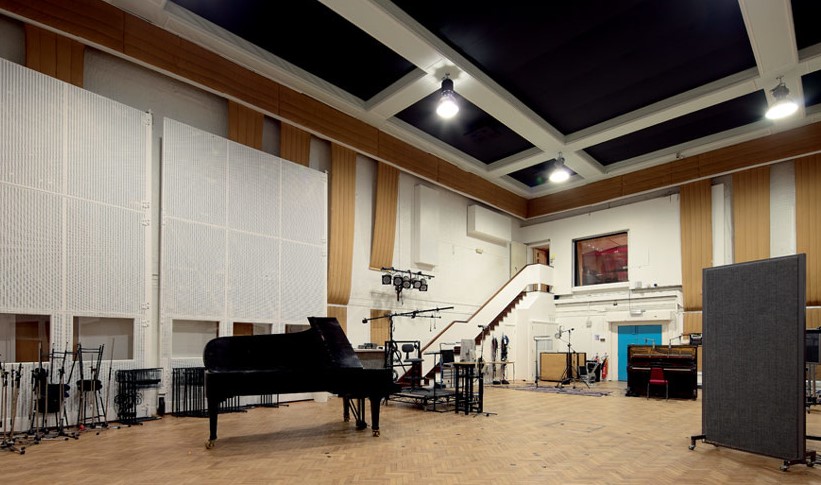 On August 14th, 1964 The Beatles entered EMI Studio Two for their second recording session for their fourth British album, which eventually was titled "Beatles For Sale." Two evening sessions were held on this day, the first from 7 to 9 pm and the second from 10 to 11:15 pm. The first session began with "I'm A Loser," which showed the group and George Martin experimenting quite a lot with the arrangement. On August 14th, 1964 The Beatles entered EMI Studio Two for their second recording session for their fourth British album, which eventually was titled "Beatles For Sale." Two evening sessions were held on this day, the first from 7 to 9 pm and the second from 10 to 11:15 pm. The first session began with "I'm A Loser," which showed the group and George Martin experimenting quite a lot with the arrangement.
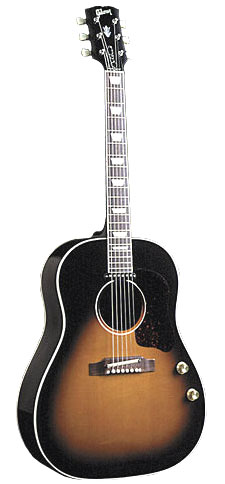 "Take two" was the first complete take, which started off in full tempo with John and Paul harmonizing the title of the song. Paul repeatedly harmonized the final line of each chorus, "I'm not what I appear to be." The harmonica and guitar solo in the middle section did not exist at this point, so the rhythm guitars just played subdued to allow for overdubbing, if this ended up being the final take (which it didn't). Also noteworthy was that it ended without repeating the chorus for the final time, instead repeating "I'm a loser" many times until Paul exclaims, "Well, there's a frayed edge for ya." "Take two" was the first complete take, which started off in full tempo with John and Paul harmonizing the title of the song. Paul repeatedly harmonized the final line of each chorus, "I'm not what I appear to be." The harmonica and guitar solo in the middle section did not exist at this point, so the rhythm guitars just played subdued to allow for overdubbing, if this ended up being the final take (which it didn't). Also noteworthy was that it ended without repeating the chorus for the final time, instead repeating "I'm a loser" many times until Paul exclaims, "Well, there's a frayed edge for ya."
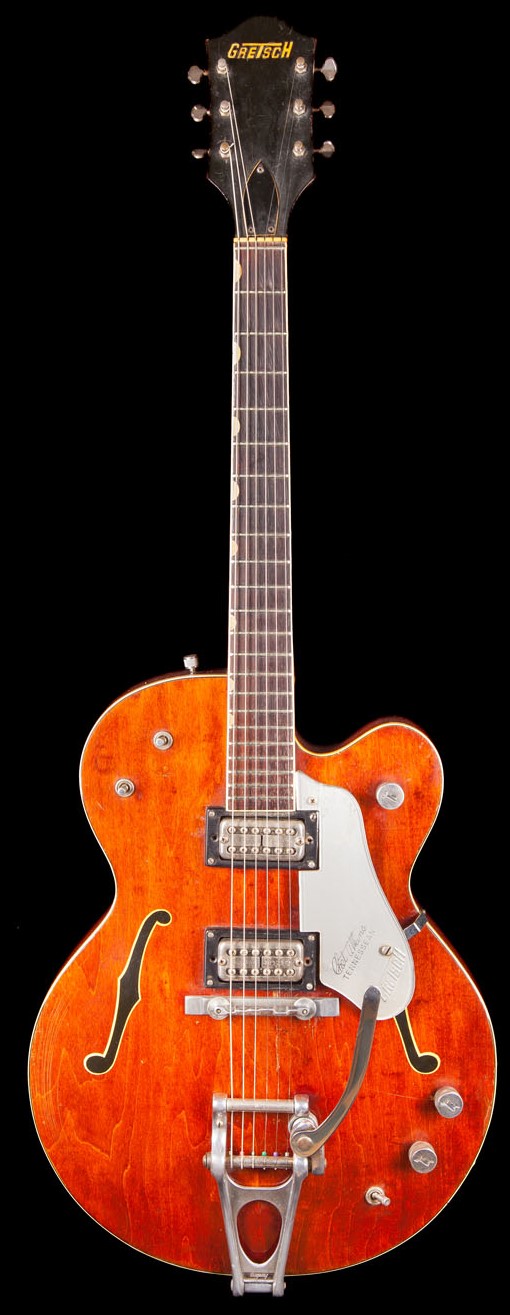 "Take three" was also complete, and showed the song moving closer to the finished product. The slow, labored introduction appears here for the first time, as well as George Harrison's first attempt at the guitar solo in the middle section. They ended the song with a complete chorus this time, but it proved unsatisfactory, Lennon ending the take saying "It didn't work out the same, because..." as the tape was stopped. "Take three" was also complete, and showed the song moving closer to the finished product. The slow, labored introduction appears here for the first time, as well as George Harrison's first attempt at the guitar solo in the middle section. They ended the song with a complete chorus this time, but it proved unsatisfactory, Lennon ending the take saying "It didn't work out the same, because..." as the tape was stopped.
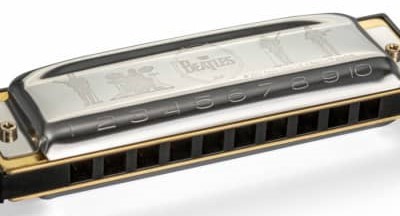 "Take four" shows John ready to play his harmonica parts while playing guitar, but the take ends midway through when John sings the wrong line in the chorus, and takes five through seven were aborted takes as well. "Take eight," however, became the final complete take, with all vocals and most of the instrumentation performed simultaneously. The overdubs were then performed, these consisting of George adding simple lead guitar passages in the open spaces of the verses, Ringo on tambourine in the choruses, and a double-tracking of John and Paul's vocals during the choruses only. The song was completed in approximately an hour, between 7 and 8 pm. "Take four" shows John ready to play his harmonica parts while playing guitar, but the take ends midway through when John sings the wrong line in the chorus, and takes five through seven were aborted takes as well. "Take eight," however, became the final complete take, with all vocals and most of the instrumentation performed simultaneously. The overdubs were then performed, these consisting of George adding simple lead guitar passages in the open spaces of the verses, Ringo on tambourine in the choruses, and a double-tracking of John and Paul's vocals during the choruses only. The song was completed in approximately an hour, between 7 and 8 pm.
The first mono mix of the song was made during the break between these two evening sessions by producer George Martin and engineers Norman Smith and Ron Pender. This mix, though, never saw the light of day.
 October 26th, 1964 was when the released mono mix was created in EMI Studio Two, this time by George Martin, Norman Smith and 2nd engineer A.B. Lincoln. The fade out to the song is slightly longer than the stereo mix, which was made on November 4th, 1964 by George Martin, Norman Smith and 2nd engineer Mike Stone in the control room of Studio Two. The stereo mix also has the guitar solo slightly louder as well as the tambourine in the chorus, which leaves a noticeable decrease in volume when the tambourine cuts out and the harmonica solo begins. Both the mono and stereo mixes show evidence of John 'popping' in his microphone whenever he sings "not what I appear to be," which is especially noticeable in the introduction. October 26th, 1964 was when the released mono mix was created in EMI Studio Two, this time by George Martin, Norman Smith and 2nd engineer A.B. Lincoln. The fade out to the song is slightly longer than the stereo mix, which was made on November 4th, 1964 by George Martin, Norman Smith and 2nd engineer Mike Stone in the control room of Studio Two. The stereo mix also has the guitar solo slightly louder as well as the tambourine in the chorus, which leaves a noticeable decrease in volume when the tambourine cuts out and the harmonica solo begins. Both the mono and stereo mixes show evidence of John 'popping' in his microphone whenever he sings "not what I appear to be," which is especially noticeable in the introduction.
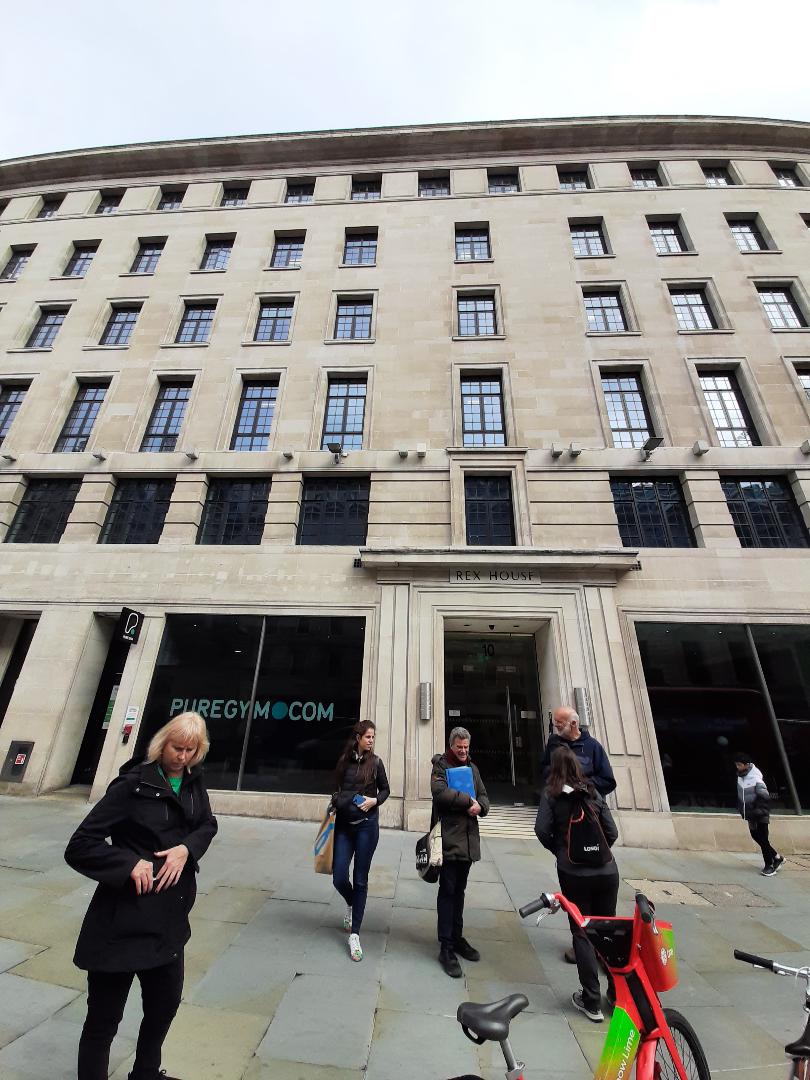 The Beatles also recorded the song twice for BBC radio, the first being on November 17th, 1964 at The Playhouse Theatre in London for the show "Top Gear," which was broadcast on November 26th of that year, still well over a week before the album was released in Britain. This recording of the song was also re-broadcast on the radio show "Saturday Club" on December 26th, 1964. Then, on May 26th, 1965, they recorded the song once again in Studio One at BBC Piccadilly Studios in London for their final BBC radio broadcast which was named "The Beatles (Invite You To Take A Ticket To Ride)." The seven songs taped for this show were produced by Keith Bateson and broadcast in Britain on June 7th of that year between 10 am and 12:15 pm. Typical of John's sense of humor on this recording was his including the lyrics "beneath this wig, I am wearing a tie." The Beatles also recorded the song twice for BBC radio, the first being on November 17th, 1964 at The Playhouse Theatre in London for the show "Top Gear," which was broadcast on November 26th of that year, still well over a week before the album was released in Britain. This recording of the song was also re-broadcast on the radio show "Saturday Club" on December 26th, 1964. Then, on May 26th, 1965, they recorded the song once again in Studio One at BBC Piccadilly Studios in London for their final BBC radio broadcast which was named "The Beatles (Invite You To Take A Ticket To Ride)." The seven songs taped for this show were produced by Keith Bateson and broadcast in Britain on June 7th of that year between 10 am and 12:15 pm. Typical of John's sense of humor on this recording was his including the lyrics "beneath this wig, I am wearing a tie."
Song Structure and Style
 The folk music style evident in this song, ala Bob Dylan, sinks right down to the structure itself, utilizing a 'verse/ chorus/ verse/ chorus/ instrumental/ verse/ chorus/ instrumental' formula, which becomes ababcabc. The instrumental section this time is shared between a harmonica solo from John and a guitar solo from George. The folk music style evident in this song, ala Bob Dylan, sinks right down to the structure itself, utilizing a 'verse/ chorus/ verse/ chorus/ instrumental/ verse/ chorus/ instrumental' formula, which becomes ababcabc. The instrumental section this time is shared between a harmonica solo from John and a guitar solo from George.
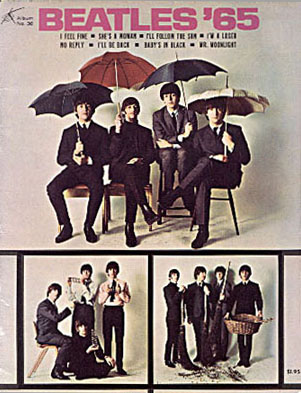 Starting off the proceedings, though, is an informal out-of-tempo introduction with Lennon's vocals leading the way, signaling McCartney to join in on harmony vocals on the word "loser," which is repeated twice. During these harmonies, John plucks out the notes of the chords in a typical singer / songwriter fashion. He then sets the tempo with his acoustic guitar on the final lyrical phrase of the introduction "I'm not what I appear to be." This introduction, no doubt from a suggestion by George Martin, is loosely based on the chorus that is heard a little later. Starting off the proceedings, though, is an informal out-of-tempo introduction with Lennon's vocals leading the way, signaling McCartney to join in on harmony vocals on the word "loser," which is repeated twice. During these harmonies, John plucks out the notes of the chords in a typical singer / songwriter fashion. He then sets the tempo with his acoustic guitar on the final lyrical phrase of the introduction "I'm not what I appear to be." This introduction, no doubt from a suggestion by George Martin, is loosely based on the chorus that is heard a little later.
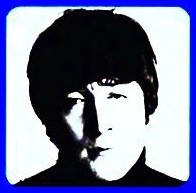 The entire group kicks in on the downbeat of the first verse, which is sixteen measures long. The most interesting focal point of the verse is John's dissension down to a low G note at the end of the second and fourth melody lines. While he struggles to hit these notes at the lowest end of his register, he hits the target nearly flawlessly throughout the song (albeit with much practice from the previous six takes). These melodic drops fit in perfectly with the lyrics that depict how "down" he feels about himself, which fall on the words "crossed" and "end." The entire group kicks in on the downbeat of the first verse, which is sixteen measures long. The most interesting focal point of the verse is John's dissension down to a low G note at the end of the second and fourth melody lines. While he struggles to hit these notes at the lowest end of his register, he hits the target nearly flawlessly throughout the song (albeit with much practice from the previous six takes). These melodic drops fit in perfectly with the lyrics that depict how "down" he feels about himself, which fall on the words "crossed" and "end."
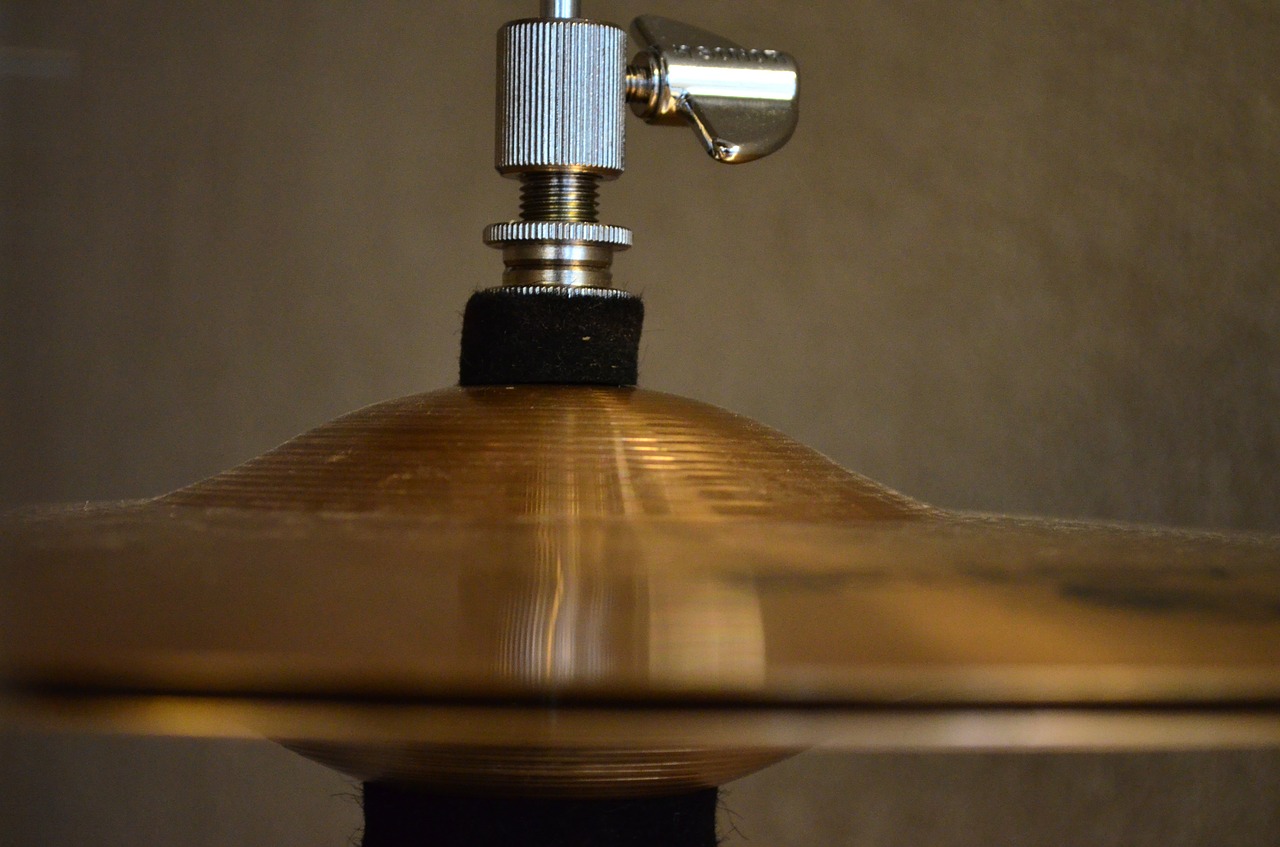 The instrumentation is quite subdued during the verse, which highlights the storyteller giving us his sorrowful details. The drums softly ride on the closed hi-hat, the lead guitar offers subtle bending phrases after each lyrical line and the bass delivers a simple "oompah" pattern while John's acoustic guitar provides a foundation to the sad story. His vocals are single-tracked, which provides an intimacy between himself and the listener. The instrumentation is quite subdued during the verse, which highlights the storyteller giving us his sorrowful details. The drums softly ride on the closed hi-hat, the lead guitar offers subtle bending phrases after each lyrical line and the bass delivers a simple "oompah" pattern while John's acoustic guitar provides a foundation to the sad story. His vocals are single-tracked, which provides an intimacy between himself and the listener.
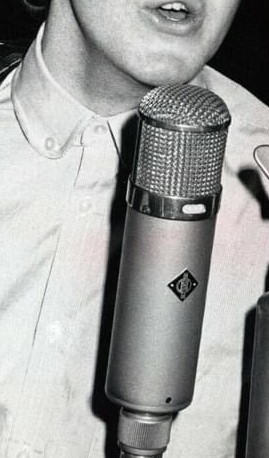 Then the chorus kicks in with sizzling cymbals and tambourine from Ringo, walking bass and wailing harmony vocals from Paul and double-tracked vocals from John. This formula results in an eight measure chorus that screams to the world what a "loser" the singer is. Then the chorus kicks in with sizzling cymbals and tambourine from Ringo, walking bass and wailing harmony vocals from Paul and double-tracked vocals from John. This formula results in an eight measure chorus that screams to the world what a "loser" the singer is.
The band turns off all that energy like a light switch as they enter into a second sixteen measure verse. They dramatically return to their subdued arrangement and single tracked vocal as John hits his low notes on the appropriate words "frown" and "cry."
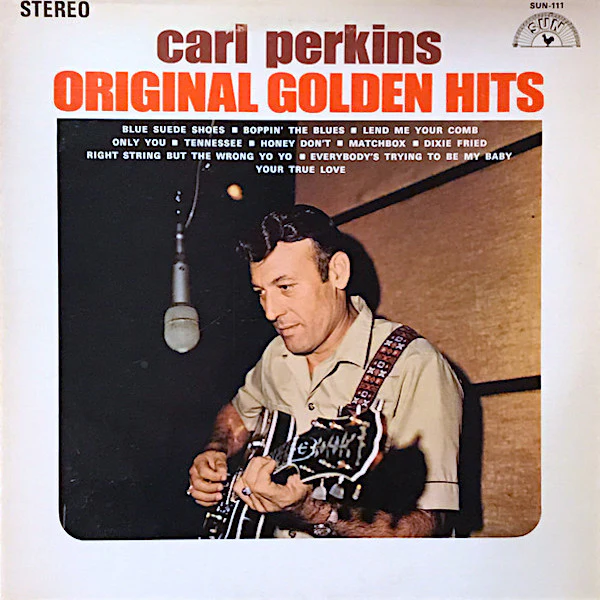 After a repeat of the chorus, the band maintains the feverish swell of volume into the first instrumental section, which is sixteen measures long and is a hybrid of the verse (the first eight measures) and the eight measure chorus. The first half of this section features a Bob Dylan-like harmonica solo from John while the second half features a Carl Perkins-like solo from George, which adds a touch of rockabilly to the proceedings. Note how closely the guitar solo resembles that which accompanies last year's "All My Loving." After a repeat of the chorus, the band maintains the feverish swell of volume into the first instrumental section, which is sixteen measures long and is a hybrid of the verse (the first eight measures) and the eight measure chorus. The first half of this section features a Bob Dylan-like harmonica solo from John while the second half features a Carl Perkins-like solo from George, which adds a touch of rockabilly to the proceedings. Note how closely the guitar solo resembles that which accompanies last year's "All My Loving."
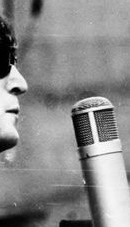 Once again the band switches off the volume for a third verse with a different set of lyrics. This time, John's low notes appropriately accentuate the lyrics "late" and "lose all." The volume swells once again for the final repeat of the chorus and reappearance of the instrumental section, which is also identical to the first except that George struggles to perform the planned solo with the same accuracy as he did the first time. This is somewhat masked by the song fading out shortly before the instrumental section was due to conclude. Once again the band switches off the volume for a third verse with a different set of lyrics. This time, John's low notes appropriately accentuate the lyrics "late" and "lose all." The volume swells once again for the final repeat of the chorus and reappearance of the instrumental section, which is also identical to the first except that George struggles to perform the planned solo with the same accuracy as he did the first time. This is somewhat masked by the song fading out shortly before the instrumental section was due to conclude.
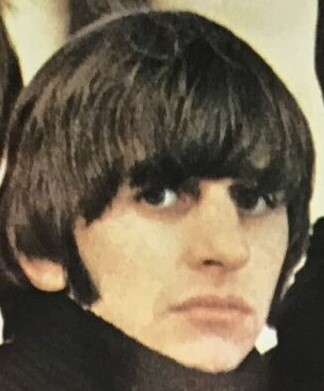 Lennon once again is the standout of the song as a whole, his acoustic guitar played somewhat aggressively with plenty of pick noise on the strings as if it helped him tell his disheartening story. Ringo jumps back and forth between subdued and accentuated playing very appropriately, while virtually no drum fills are played throughout the song. (One does creep in at the end of the second measure of the final instrumental section, which has the awkward-but-distinctive "Ringo" feel to it.) Lennon once again is the standout of the song as a whole, his acoustic guitar played somewhat aggressively with plenty of pick noise on the strings as if it helped him tell his disheartening story. Ringo jumps back and forth between subdued and accentuated playing very appropriately, while virtually no drum fills are played throughout the song. (One does creep in at the end of the second measure of the final instrumental section, which has the awkward-but-distinctive "Ringo" feel to it.)
 McCartney once again gives a stellar performance on bass, especially during the chorus and instrumental sections, while shooting up to perform his usual spot-on higher harmonies. His insistence on George Harrison pre-planning his guitar solos works well in this song as George comes through with hardly a blemish (at least the first time through). His accents and bent notes throughout the verses also add appropriate delicate touches to the song. McCartney once again gives a stellar performance on bass, especially during the chorus and instrumental sections, while shooting up to perform his usual spot-on higher harmonies. His insistence on George Harrison pre-planning his guitar solos works well in this song as George comes through with hardly a blemish (at least the first time through). His accents and bent notes throughout the verses also add appropriate delicate touches to the song.
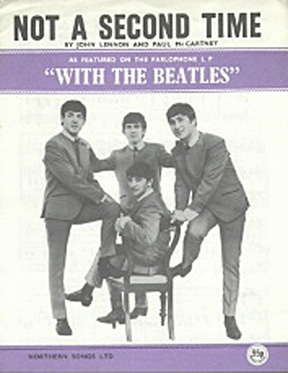 The lyrics seem to appear as a brutally honest admission of gambling at the game of love and losing big time, which in itself is very convincingly done and quite unlike anything Lennon has written before. While previous songs such as "Not A Second Time" and "I'll Cry Instead" portray the singer as the one being hurt and therefore we should feel sorry for him, this song shows him fully admitting his guilt. Although crying has been a general theme in John's songs for years, the line "is it for her or myself that I cry" shows the pitiable situation he finds himself in. He knows he blew it, and he is wallowing in self-pity. We therefore admire him for being man enough to admit his mistakes. The lyrics seem to appear as a brutally honest admission of gambling at the game of love and losing big time, which in itself is very convincingly done and quite unlike anything Lennon has written before. While previous songs such as "Not A Second Time" and "I'll Cry Instead" portray the singer as the one being hurt and therefore we should feel sorry for him, this song shows him fully admitting his guilt. Although crying has been a general theme in John's songs for years, the line "is it for her or myself that I cry" shows the pitiable situation he finds himself in. He knows he blew it, and he is wallowing in self-pity. We therefore admire him for being man enough to admit his mistakes.
The girl in question wasn't just another conquest, but was very special, "a girl in a million." The winning/losing theme is played up repeatedly in the song, evidenced by knowing "she would win in the end," saying that he "lost someone who's near" to him, and how he's warning us of his mistakes so that we "won't lose all."
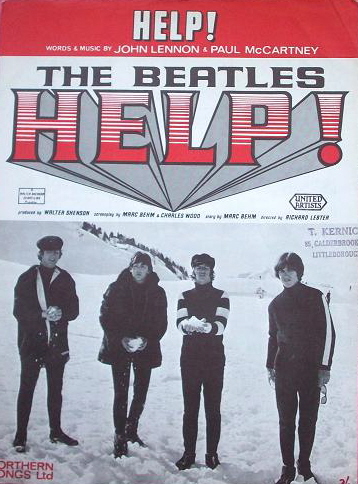 What adds to the potency of these lyrics is the autobiographical nature depicted throughout. The repeated line "I'm not what I appear to be" suggests John's personal feelings, as Kenneth Allsop suggested he interject into his lyrics during their discussion back in March of that year. Lennon also adds the telling line "Although I laugh and I act like a clown, beneath this mask I am wearing a frown." John's clownish antics while performing live are now legendary, as are his irreverent answers in interviews during the Beatle years, which he later admitted were due to the many insecurities he was feeling. These insecurities were depicted in later songs, "Help!" being the most noteworthy example. What adds to the potency of these lyrics is the autobiographical nature depicted throughout. The repeated line "I'm not what I appear to be" suggests John's personal feelings, as Kenneth Allsop suggested he interject into his lyrics during their discussion back in March of that year. Lennon also adds the telling line "Although I laugh and I act like a clown, beneath this mask I am wearing a frown." John's clownish antics while performing live are now legendary, as are his irreverent answers in interviews during the Beatle years, which he later admitted were due to the many insecurities he was feeling. These insecurities were depicted in later songs, "Help!" being the most noteworthy example.
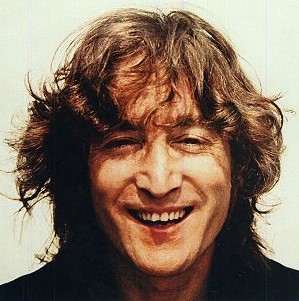 The word "clown" itself was indication of Bob Dylan's influence on the song. "I objected to the word 'clown' because that was always artsy-fartsy," Lennon explained in a 1974 interview, "but Dylan had used it so I thought it was alright, and it rhymed with whatever I was doing." The word "clown" itself was indication of Bob Dylan's influence on the song. "I objected to the word 'clown' because that was always artsy-fartsy," Lennon explained in a 1974 interview, "but Dylan had used it so I thought it was alright, and it rhymed with whatever I was doing."
Although other writers may speculate as to when Lennon's songwriting changed, most agree that the true turning point was with "I'm A Loser." While his inner feelings may have been unfounded, they nonetheless were very real to him. From this point forward, with very few exceptions, John Lennon wrote about what John Lennon was feeling. He didn't write songs about 'Desmond and Molly' or fictional situations about romance. He kept quite firm in his resolve to use his songwriting talents to express how he felt. And we all can be grateful for that.
American Releases
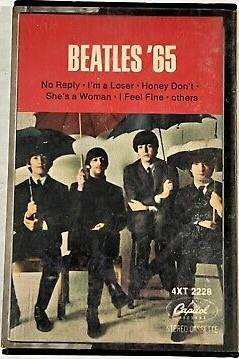 America first got acquainted with the song on the December 15th, 1964 release "Beatles '65." This makeshift Capitol album was rush released because of early December radio play in the New York, Pittsburg and Atlanta areas from the British "Beatles For Sale" album which was released earlier that month. The result was a Billboard #1 album that sold over three million copies. "Beatles '65" then appeared as an individual compact disc on January 21st, 2014, both the mono and stereo versions of the album contained on a single CD. America first got acquainted with the song on the December 15th, 1964 release "Beatles '65." This makeshift Capitol album was rush released because of early December radio play in the New York, Pittsburg and Atlanta areas from the British "Beatles For Sale" album which was released earlier that month. The result was a Billboard #1 album that sold over three million copies. "Beatles '65" then appeared as an individual compact disc on January 21st, 2014, both the mono and stereo versions of the album contained on a single CD.
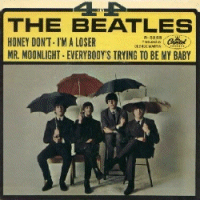 Capitol was impressed enough by the sales of its May 11th, 1964 EP "Four By The Beatles" that it prompted the label to introduce a series of singles containing four songs by popular youth-oriented artists. This series, entitled "4-By," ended up being short-lived because of meager sales, but not before they tried one of these releases with Beatles product. February 1st, 1965 saw the release of "4-By The Beatles" which featured four tracks from the current "Beatles '65" album, "I'm A Loser" being one of them. While "4-By The Beach Boys" did quite well on the charts, The Beatles disc only peaked at #68 on the Billboard Hot 100 and was out of print by the end of the year. Capitol was impressed enough by the sales of its May 11th, 1964 EP "Four By The Beatles" that it prompted the label to introduce a series of singles containing four songs by popular youth-oriented artists. This series, entitled "4-By," ended up being short-lived because of meager sales, but not before they tried one of these releases with Beatles product. February 1st, 1965 saw the release of "4-By The Beatles" which featured four tracks from the current "Beatles '65" album, "I'm A Loser" being one of them. While "4-By The Beach Boys" did quite well on the charts, The Beatles disc only peaked at #68 on the Billboard Hot 100 and was out of print by the end of the year.
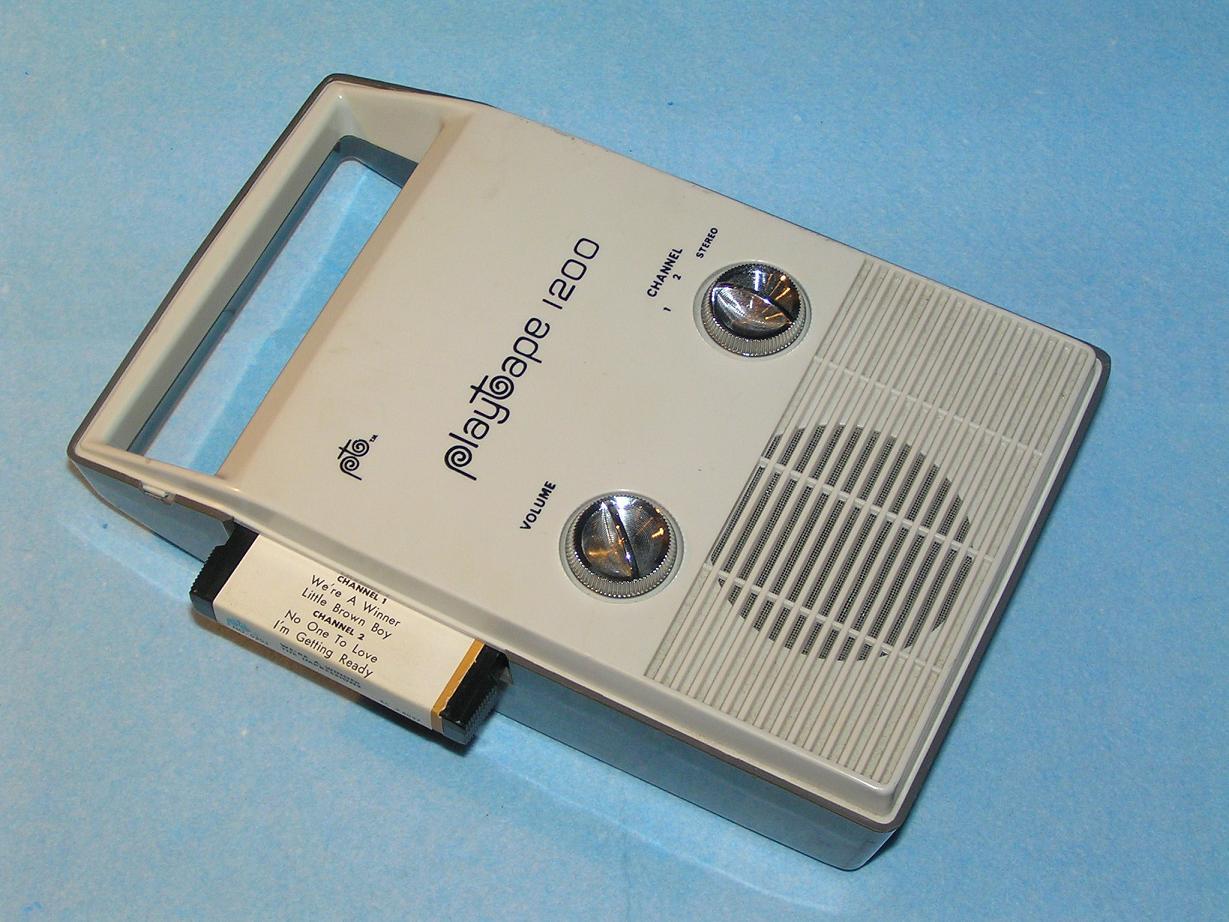 Sometime in 1967, Capitol released Beatles music on a brand new but short-lived format called "Playtapes." These tape cartridges did not have the capability to include entire albums, so two truncated four-song versions of "Beatles '65" were released in this portable format, "I'm A Loser" being on one of these. These "Playtapes" are highly collectable today. Sometime in 1967, Capitol released Beatles music on a brand new but short-lived format called "Playtapes." These tape cartridges did not have the capability to include entire albums, so two truncated four-song versions of "Beatles '65" were released in this portable format, "I'm A Loser" being on one of these. These "Playtapes" are highly collectable today.
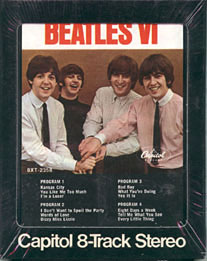 When Capitol released their 8-track version of the album "Beatles VI" in 1967, they included "I'm A Loser" as a bonus track. This was done in order to flesh out the eleven songs to twelve, which could more readily be divided between the four channels of the tape. When Capitol released their 8-track version of the album "Beatles VI" in 1967, they included "I'm A Loser" as a bonus track. This was done in order to flesh out the eleven songs to twelve, which could more readily be divided between the four channels of the tape.
The first time the original British "Beatles For Sale" album was made available in the US was the "Original Master Recording" vinyl edition released through Mobile Fidelity Sound Lab in February of 1987. This album included "I'm A Loser" and was prepared utilizing half-speed mastering technology from the original master tape on loan from EMI. This version of the album was only available for a short time and is quite collectible today.
 February 26th, 1987 saw the release of the entire "Beatles For Sale" album on compact disc in America, the vinyl release coming out on July 21st, 1987. While this release was in mono only, the remastered version released on CD on September 9th, 2009 and on vinyl on November 13th, 2012 was in stereo. February 26th, 1987 saw the release of the entire "Beatles For Sale" album on compact disc in America, the vinyl release coming out on July 21st, 1987. While this release was in mono only, the remastered version released on CD on September 9th, 2009 and on vinyl on November 13th, 2012 was in stereo.
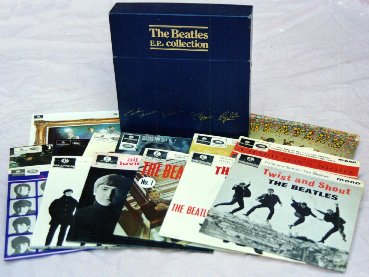 Another mono release in the US was on June 30th, 1992. The box set "Compact Disc EP Collection" came out on this date, "I'm A Loser" being included therein because of it appearing on the EP entitled "Beatles For Sale," which was originally released on vinyl in Britain on April 6th, 1965. Another mono release in the US was on June 30th, 1992. The box set "Compact Disc EP Collection" came out on this date, "I'm A Loser" being included therein because of it appearing on the EP entitled "Beatles For Sale," which was originally released on vinyl in Britain on April 6th, 1965.
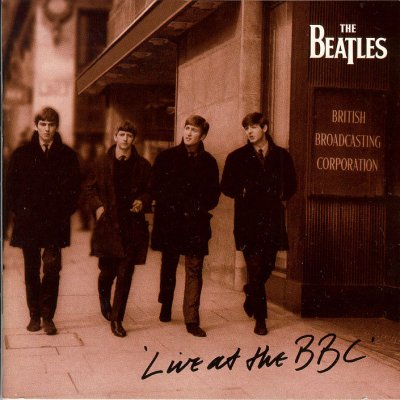 "Live At The BBC" was released on November 30th, 1994, which featured never before heard versions of songs The Beatles recorded specifically for British radio broadcasts. The version of "I'm A Loser" heard on this double-disc was recorded on November 17th, 1964 for the BBC show "Top Gear" which aired on November 26th. On November 11th, 2013, this album was remastered, re-packaged and re-released. "Live At The BBC" was released on November 30th, 1994, which featured never before heard versions of songs The Beatles recorded specifically for British radio broadcasts. The version of "I'm A Loser" heard on this double-disc was recorded on November 17th, 1964 for the BBC show "Top Gear" which aired on November 26th. On November 11th, 2013, this album was remastered, re-packaged and re-released.
Because of the demand to hear the original US albums as they were heard in the sixties, the CD box set "The Capitol Albums, Vol. 1" was released on November 16th, 2004. Both the stereo and mono mixes of "Beatles '65," including "I'm A Loser," were contained on one of the discs in this set.
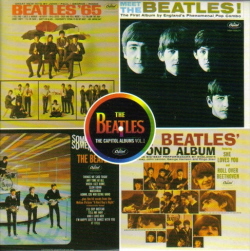 Just prior to the above release, a promo CD sampler came out and was sent to American radio stations. Both the stereo and mono mixes of the song "I'm A Loser" were included on this single disc, which is quite hard to find today. Just prior to the above release, a promo CD sampler came out and was sent to American radio stations. Both the stereo and mono mixes of the song "I'm A Loser" were included on this single disc, which is quite hard to find today.
The original 1964 mono mix also received an amazing remastering job, the evidence presented in the box set "The Beatles In Mono," which was released on CD on September 9th, 2009 and on vinyl on September 9th, 2014.
Live Performances
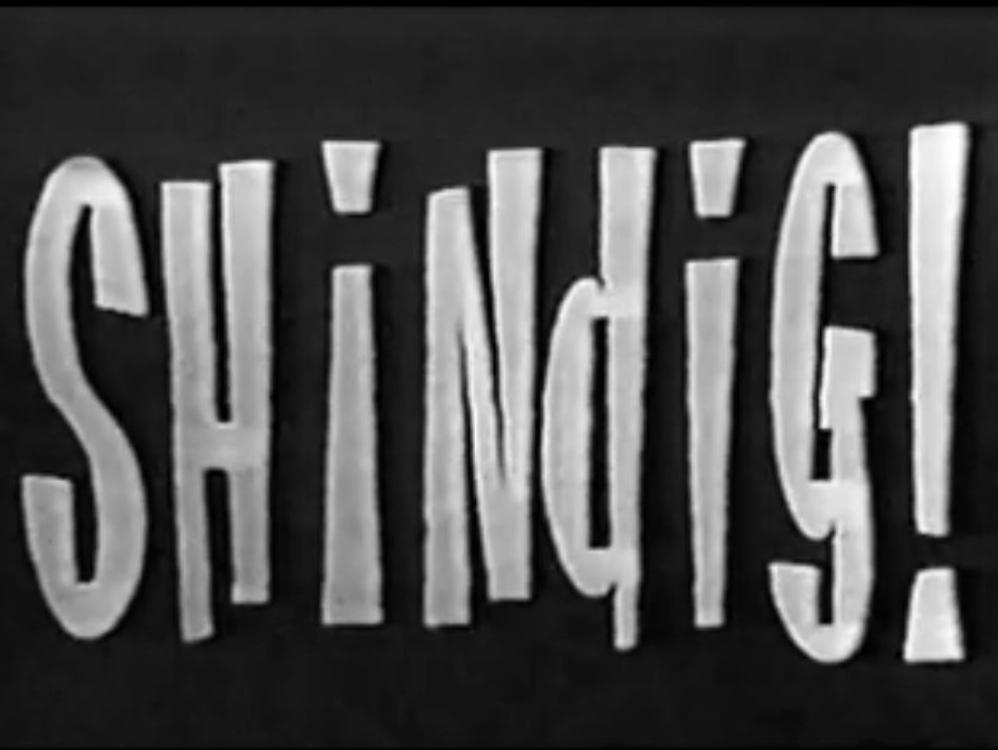 Even though the song was not chosen as the next Beatles single, they still felt strongly enough about the track to perform it quite extensively well into 1965. The first time they premiered the song was long before either the British or American albums were released. On October 3rd, 1964, The Beatles debuted "I'm A Loser" on the American show "Shindig!" which was actually recorded and filmed in London. I say 'recorded and filmed' because upon viewing this performance you can see that, while it's not lip-synced, it must have been recorded especially for the program beforehand without vocals. The actual performance that was filmed before members of The Beatles Fan Club in The Granville Studio was done with live vocals on top of a pre-recorded tape. The America-only showing of this performance was on October 7th, 1964. Even though the song was not chosen as the next Beatles single, they still felt strongly enough about the track to perform it quite extensively well into 1965. The first time they premiered the song was long before either the British or American albums were released. On October 3rd, 1964, The Beatles debuted "I'm A Loser" on the American show "Shindig!" which was actually recorded and filmed in London. I say 'recorded and filmed' because upon viewing this performance you can see that, while it's not lip-synced, it must have been recorded especially for the program beforehand without vocals. The actual performance that was filmed before members of The Beatles Fan Club in The Granville Studio was done with live vocals on top of a pre-recorded tape. The America-only showing of this performance was on October 7th, 1964.
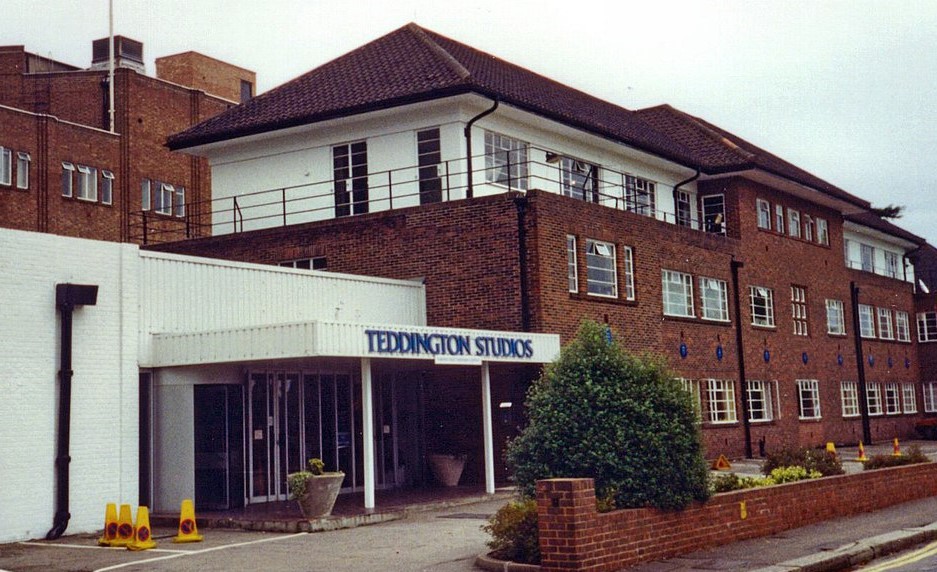 The Beatles then performed the song on a special edition of the British television show "Thank Your Lucky Stars" named "Lucky Stars Special" because of their appearance on the show. This was actually a pre-taped lip-synced performance of the song done on November 14th, 1964 at Teddington Studio Centre which was broadcast on November 21st of that year, about two weeks before the album actually came out. The Beatles then performed the song on a special edition of the British television show "Thank Your Lucky Stars" named "Lucky Stars Special" because of their appearance on the show. This was actually a pre-taped lip-synced performance of the song done on November 14th, 1964 at Teddington Studio Centre which was broadcast on November 21st of that year, about two weeks before the album actually came out.
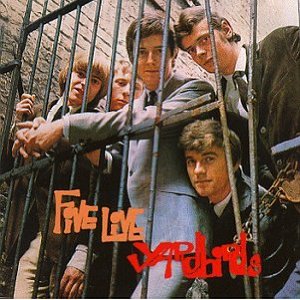 Manager Brian Epstein put together "Another Beatles Christmas Show" to close out 1964 at the Hammersmith Odeon in London. This variety show, which included The Yardbirds featuring Eric Clapton, ran from December 24th, 1964 to January 16th, 1965 with a total of 38 performances. "I'm A Loser" was among the 11 songs The Beatles performed during this extensive show. Manager Brian Epstein put together "Another Beatles Christmas Show" to close out 1964 at the Hammersmith Odeon in London. This variety show, which included The Yardbirds featuring Eric Clapton, ran from December 24th, 1964 to January 16th, 1965 with a total of 38 performances. "I'm A Loser" was among the 11 songs The Beatles performed during this extensive show.
June 20th, 1964 started off a 14-day European tour which included "I'm A Loser" in their 12 song set list. Both the afternoon and evening sessions on this date in Paris were recorded for radio and television broadcast in that country. They performed in France, Italy and Spain, July 3rd in Barcelona being the last time The Beatles ever performed the song.
Conclusion
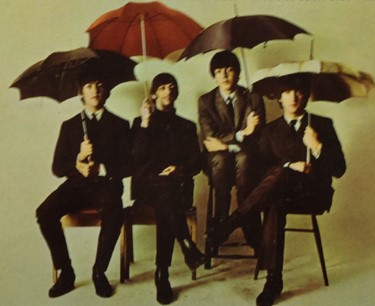 1964 will forever be etched in American history as 'The Year of the Beatles.' As the year was coming to a close, echoes of "I Want To Hold Your Hand" were still reverberating in the minds of the youth of America, although The Beatles had long grown tired of the song as December rolled around. Having been retired from their set list months before and considered by the group as simplistically sickening, they had grown by leaps and bounds within a mere twelve month period. 1964 will forever be etched in American history as 'The Year of the Beatles.' As the year was coming to a close, echoes of "I Want To Hold Your Hand" were still reverberating in the minds of the youth of America, although The Beatles had long grown tired of the song as December rolled around. Having been retired from their set list months before and considered by the group as simplistically sickening, they had grown by leaps and bounds within a mere twelve month period.
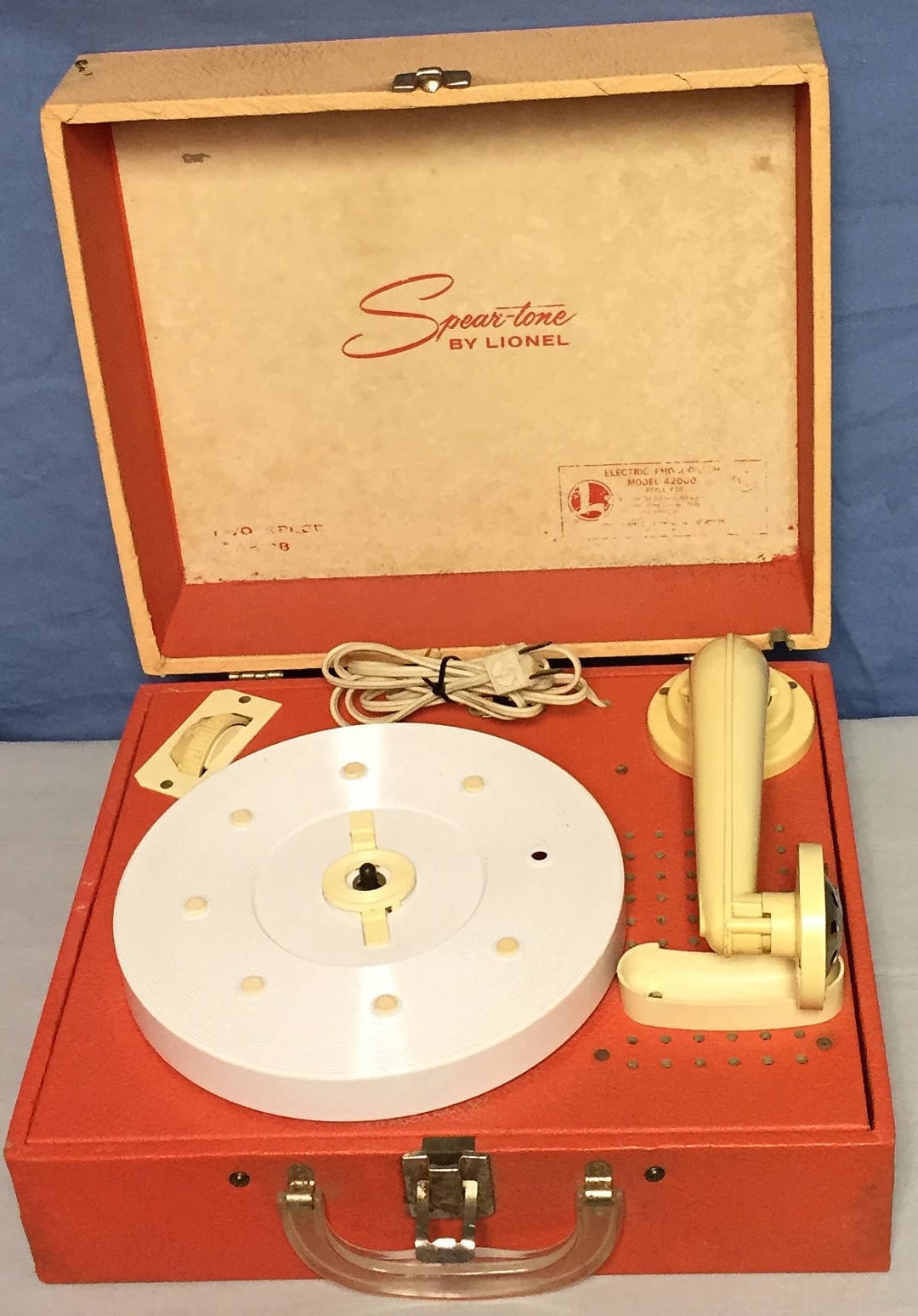 "I'm A Loser" appeared on American record players in December of 1964 as testimony to what their fans could expect from here on out. It was as if The Beatles were telling fans to either accept where they were going artistically or find someone else to follow. American audiences, as well as fans around the world, wisely chose to hang on for an amazing six year ride. "I'm A Loser" appeared on American record players in December of 1964 as testimony to what their fans could expect from here on out. It was as if The Beatles were telling fans to either accept where they were going artistically or find someone else to follow. American audiences, as well as fans around the world, wisely chose to hang on for an amazing six year ride.
Song Summary
"I'm A Loser"
Written by: John Lennon / Paul McCartney
-
Song Written: July 1964
- Song Recorded: August 14, 1964
- First US Release Date: December 15, 1964
- First US Album Release: Capitol #ST-2228 "Beatles '65"
- US Single Release: Capitol #R-5365 "4-By The Beatles" EP
- Highest Chart Position: #68
- British Album Release: Parlophone #PCS 3062 "Beatles For Sale"
- Length: 2:31
- Key: G major
- Producer: George Martin
- Engineers: Norman Smith, Ron Pender
Instrumentation (most likely):
- John Lennon - Lead Vocals, Rhythm Guitar (1962 Gibson J160E), Harmonica (Hohner Chromatic)
- Paul McCartney - Bass Guitar (1963 Hofner 500/1), Harmony Vocals
- George Harrison - Lead Guitar (1963 Gretsch 6119 Tennessean)
- Ringo Starr - Drums (1964 Ludwig Super Classic Black Oyster Pearl), tambourine
Written and compiled by Dave Rybaczewski
|
IF YOU WOULD LIKE TO MAKE A DONATION TO KEEP THIS WEBSITE UP AND RUNNING, PLEASE CLICK BELOW!
|